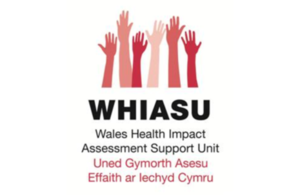A skills and knowledge framework for Health Impact Assessment
How the Wales Health Impact Assessment Support Unit used the Public Health Skills and Knowledge Framework to review their training strategy and shape practice.

Assessing the effect of policies and strategies on health is a core public health capability detailed in the Public Health Skills and Knowledge Framework (PHSKF).
It is covered in ‘PHSKF B1.2: Assess the impact and benefits of health and other policies and strategies on the public’s health and health inequalities’.
The Wales Health Impact Assessment Support Unit (WHIASU) was established in 2004 to support the development of Health Impact Assessment (HIA) practice in Wales. HIA is an interdisciplinary area of public health practice that is applied across sectors, including public health, land use planning, local government, and environmental health to improve population health and reduce health inequalities.
In 2017, WHIASU decided to review its training strategy in response to the changing legislative environment in Wales. The Well-being of Future Generations (Wales) Act 2015 provides a government-wide policy framework centred around sustainable development. The Public Health (Wales) Act 2017 (Welsh Government, 2017) has made HIA statutory for public bodies in certain circumstances, enacting a ‘Health in all Policies’ approach.
The WHIASU developed a skills and knowledge framework specific to HIAs as a response to an anticipated need for practitioners, reviewers and policy makers to be skilled in conducting (and quality assuring) HIAs.
The solution
WHIASU used the PHSKF and Skills for Health National Occupational Standards for impact assessment for health and wellbeing (Skills for Health 2010a and 2010b) to map areas of skills and knowledge relevant to HIA practice across seven key role descriptors.
These role descriptors for HIA were developed to enable people to clearly identify where their work roles are relevant and transferable to the practice of HIA, ‘Health in all Policies’ and the expectations and outcomes of the roles.
All function areas of the PHSKF were relevant to HIA: technical, contextual and delivery. The PHSKF provided an important benchmark for the HIA Skills and Knowledge Framework (SKF) and the mapping enabled the WHIASU team to pinpoint and distinguish areas of skills and knowledge relevant to specific roles in HIA.
For example:
-
PHSKF A2.2: Advocate public health principles and action to protect and improve health and wellbeing - this was identified as a common competency across all roles as anyone involved in HIA needs to understand the wider determinants of health and health inequalities
-
PHSKF C2.3: Facilitate dialogue with groups and communities to improve health literacy and reduce inequalities using a range of tools and technologies - this is relevant to lead HIA practitioners or contributors with the relevant skills who may be directly engaging private citizens and communities in a HIA
The relevant themes in the PHSKF, such as sustainability, joint and system-based working along with a focus on the wider public health workforce were particularly relevant and complimentary to HIA practice.
The WHAISU (2019) Training and Capacity Building Framework for Health Impact Assessment was published in June 2019 and provides a clear set of learning outcomes for training and development opportunities in HIA.
The ‘areas of knowledge and skills’ are those needed to be exhibited by a competent team of people engaged in a HIA. The lead HIA Practitioner for the HIA does not necessarily have to have expertise in carrying out each area, but does need to understand what is required to complete a high quality HIA. They also need to be capable of drawing together and coordinating the requisite skill set, and are accountable for the final HIA and its recommendations.
The following bullet points show how the skills areas of the WHIASU Training and Capacity Building Framework for Health Impact Assessment map to the PHSKF functions:
-
Skills Area 1 (lead, plan, design, delivery and evaluate HIA) maps to PHSKF B1.2
-
Skills Area 2 (facilitate participation) maps to PHSKF C1.2
-
Skills Area 3 (data collection, analysis and critical appraisal) maps to PHSKF A1.5
-
Skills Area 4 (collaborative working) maps to PHSKF B2
B2 -
Skills Area 5 (communication skills) maps to PHSKF C2
-
Skills Area 6 (project management and governance) maps to PHSKF C3
The outcome
The framework enables individuals, organisational leads and their officers and practitioners from all sectors to identify how their existing skills and knowledge are transferable to HIA practice and be able to highlight areas for development.
WHIASU hopes that this will enable a cross sector workforce to have the confidence to engage in HIA practice by highlighting that they have the relevant capabilities to contribute.
The future
As part of Public Health Wales World Health Organization Collaborating Centre (WHO CC) on ‘Investment for Health and Well-being’ for the WHO Europe region, WHIASU will lead on capacity building for HIA capability using the HIA SKF. As the first international SKF for HIA, this framework represents a significant contribution to shaping HIA practice and workforce development for HIA across nations.
Associated resources will be produced to support this work.
Contact
The Wales Health Impact Assessment Support Unit (WHIASU) supports collaborative working and knowledge-sharing, and as such are willing to share more detailed information regarding the methodology and resources they have developed with others.
You can contact the PHSKF programme team at [email protected] for contact details.